Ava DuVernay on Her New Movie ‘Origin’ and Why Racism Is Just a ‘Band-Aid on a Wound’
- Oops!Something went wrong.Please try again later.
- Oops!Something went wrong.Please try again later.
It was some time after the murder of George Floyd, after the emotional journey of making the 2019 limited series “When They See Us,” after the national reckoning that came with Black Lives Matter, that Ava DuVernay picked up the book “Caste: The Origins of Our Discontent.”
She read it. Then she read it again. The densely thoughtful work by Pulitzer Prize-winning author Isabel Wilkerson explored American racism in a wholly new way — as an expression of caste. The writer-director-producer of “Selma,” “13th” and “Queen Sugar” was intrigued and a little confused.
“I didn’t understand it the first time because it’s pretty weighty,” DuVernay said. “I got to the end of it and thought, OK, that could be it. I could put it aside and just keep going. But as I didn’t get it, let me read it again. So I read it again. And somewhere in the middle of the second time, I started to really hear the voice of the author. She came off the pages and became a bit of a character for me. That’s my thought: Could this be a movie? And everyone I asked said, ‘No, ma’am. It cannot be a movie.’”
So, of course, she became determined to make it a movie. DuVernay’s new film, “Origin,” repositions “Caste” as a narrative story. The masterful Aunjanue Ellis-Taylor plays Wilkerson, the writer and the woman, as she tries to get her mind around the concept of caste and its pernicious tentacles, traveling to Germany to research the Nazis’ “othering” of the Jews and to India to witness the consequences of caste.
Why does the concept of racism feel inadequate to understanding the persistence of inequality, she asks? What are the true underpinnings of these systems that consider one category of human inferior to another?
The film is a sweeping narrative that bobs and weaves in and out of history — from ancient slave ships to book burnings in Berlin to a sewage system in Delhi — while also telling the personal story of Wilkerson’s family tragedies that intersected with the writing of the book and the loss of her husband, her mother and her cherished cousin.
If that seems like a lot to take in for a single narrative film, it is — and yet it works.
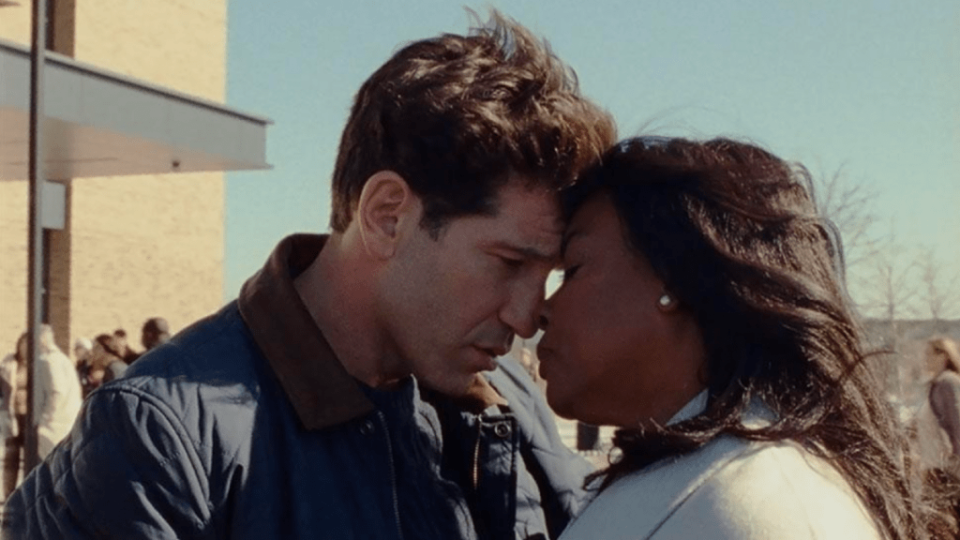
“It’s like an intellectual exercise, in a way. Absolutely,” said DuVernay, who was interviewed in front of a packed room of listeners at TheWrap’s Power Women Summit in early December. “There’s no beginning, middle and end to a story. And so the idea of that also excited me to do something that everyone said I couldn’t do. The book was called ‘unadaptable.’ So what do you do? You go adapt.”
Obviously.
For Wilkerson, racism is too simplistic a theory for why Black Americans have been enslaved and treated unequally throughout American history. Instead, she investigated the theory that human societies share a drive to subjugate one set of people under another, irrespective of race. “Throughout human history, three caste systems have stood out,” Wilkerson writes in “Caste.” “The tragically accelerated, chilling, and officially vanquished caste system of Nazi Germany. The lingering, millennia-long caste system of India. And the shape-shifting, unspoken, race-based caste pyramid in the United States.”
It is this system that Wilkerson interrogates and that “Origin” pierces, drawing connections between the horrors of American slavery, Germany’s destruction of European Jewry in the Holocaust and the untouchable status of Dalit Indians, the lowest caste in India.
“Racism is a Band-Aid on a wound,” DuVernay said, explaining the concept. “It’s the skin on a skeleton. The skeleton is caste. Antisemitism is the skin on a skeleton. Homophobia is the skin on a skeleton. This is Isabel Wilkerson’s theory — the heart of it, the origin of it is a thing called caste. And it takes all these different colors and all these different configurations. Some might be based on skin color, some might be based on gender, some might be based on your sexual preference, some might be based because you live in a certain part of a community, right? But all of these things are the ways in which we create hierarchies of people.”
DuVernay said the systems are fundamentally not about race. “It’s about something else.” In India, she observed, the untouchable Dalit caste is the same color as everyone else in Indian society. “So you can’t call that racism because they’re all technically the same race. You can’t look at the horrors of the Holocaust and call that racism because it’s not racism, it’s something else. It’s antisemitism. And so it’s about digging into it and saying at the core of it all, it’s about hierarchy. Someone’s at the top; someone’s at the bottom.”
But how to make it into a film?
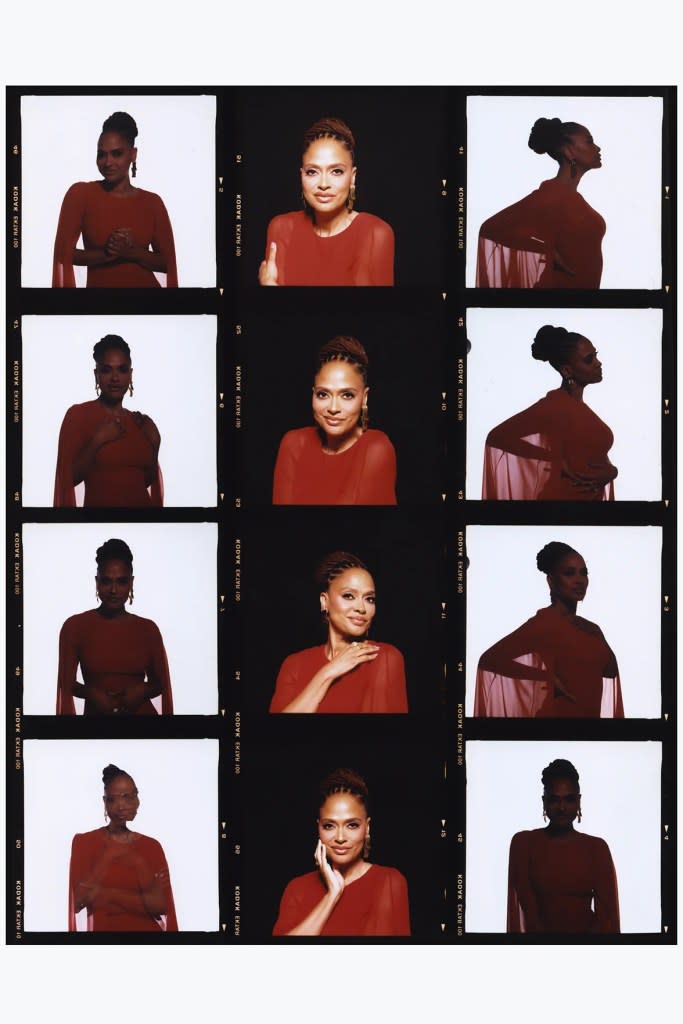
The determination of DuVernay would move an army, and it turned out that she and longtime friend, producer Paul Garnes, with whom she’d made her early film “Middle of Nowhere,” would need that army. She first had to write the story, though, working with Wilkerson — an intensely private person — for over a year and a half in Zoom conversations, talking through ideas and information.
DuVernay’s last theatrical film, “A Wrinkle in Time,” had a $100 million budget. “Origin” was conceived as a big-budget studio film with Netflix, but the streamer wasn’t offering a green light in 2022 after turning down the dial on its production volume and budget. DuVernay didn’t want to wait. “It was a wide-eyed dream of Ava’s,” Garnes said. “She wanted it out this year (2023).”
DuVernay knew she needed a different path to fast-track a movie with a budget that would reach $38 million. She and Garnes quickly pivoted to an indie mentality and a creative financing approach that took her back to her early years as a filmmaker. She cold-called Darren Walker, president of the Ford Foundation, making the case that “Origin” met the foundation’s mission of creating cultural change. Walker ended up supporting the film and bringing in billionaire philanthropists Laurene Powell-Jobs, Melinda Gates and Anne Wojcicki, all of whom are coproducers on the film.
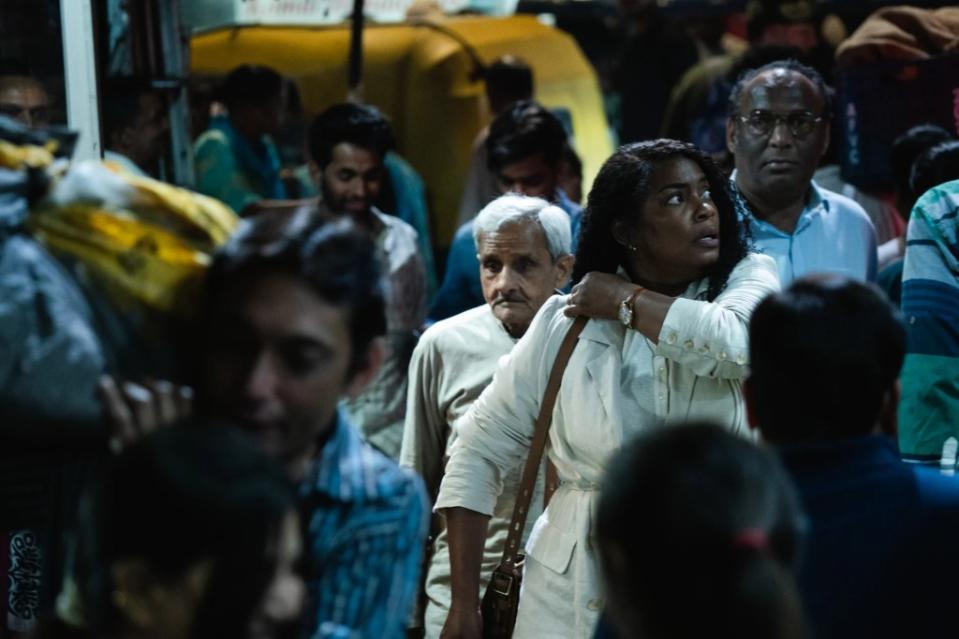
Even so, the filmmakers cut all sorts of corners to keep the budget in check and achieve the vision required by numerous periods, countries and characters.” We shot the film in three countries in 37 days,” DuVernay recalled. “And we were hustling lots of different decades and lots of different periods. It was a real lift for this independent crew.”
Ellis-Taylor recalled a guerilla-style sequence that they shot on arrival in Delhi. They had no filming permit for the airport, where DuVernay wanted a verite-style arrival shot. So Ellis-Taylor found herself doing an impromptu change in the middle of the plane with the help of costume designer Dominique Dawson, makeup artist Ashunta Sheriff and other crew members. “As the plane was descending, the people were doing my makeup and I was changing clothes in the aisle,” Ellis-Taylor recalled. “Not in the bathroom, in the aisle of the plane. People were blocking me so people wouldn’t see my underwear. Shunta is doing my makeup. Dominique is throwing clothes on me as the plane is descending into Delhi. And our intrepid camera team is following behind me, hiding their cameras as I’m leaving the airplane and walking around the airport.”
To save money, they switched one major scene of a slave auction to recreating the forced journey of enslaved Africans to the New World instead. “We decided on the Middle Passage as a financial compromise,” Garnes said.
For the biggest set piece in the film, the recreation of a massive book-burning in Berlin, DuVernay and Garnes had the idea of shooting in the actual spot where on May 10, 1933, some 40,000 people watched torch-wielding Germans create a massive bonfire of books. “There’s a square called Bebelplatz where tens of thousands of books were burned,” DuVernay said. “Anything that was talking about freedom, basically injustice, all of that stuff was burned.’
How to get permission at a national monument? “Imagine us — two Black folks,” she said of herself and Garnes. “He’s from Chicago. I’m from Compton. We roll up and we’re like, ‘Hi, we’re African-Americans. We did a film called ‘Selma.’ And we would like to shoot here in the real place.’ And they were like, ‘OK.’” She still seems incredulous that German authorities agreed. “We said, ‘We’re going to light a big fire and burn some books,’ and they said, ‘Yes.’”
The filming plan involved hiring 1,000 German extras ready to put on Nazi uniforms and display swastikas, which is normally illegal on German soil. Garnes said the book-burning shoot was the most meticulously planned sequence of the film. “It’s also the most difficult,” he said. “Both emotionally and technically.” DuVernay and cinematographer Matthew Lloyd used five camera units and shot the full sequence in a night shoot that lasted nearly 12 hours.
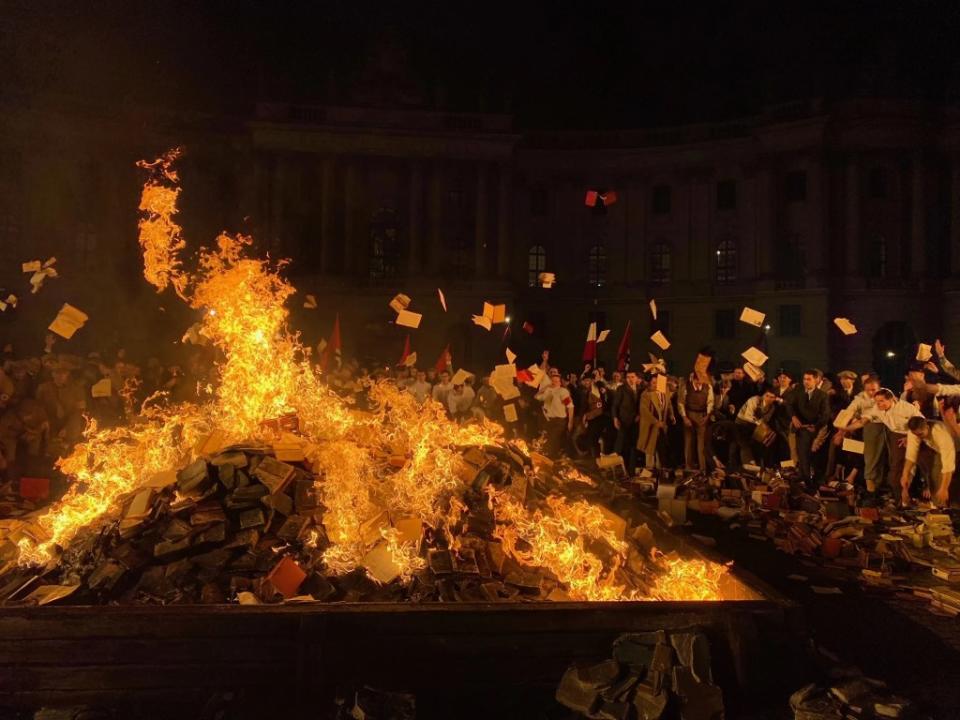
Emotions ran high at many moments during the shoot. Garnes recalled young Black crew members struggling with the scene of the shooting death of Trayvon Martin. And when they shot a scene of women having their heads shaved in a concentration camp, a background actor from a local synagogue broke down in tears because DuVernay wrapped the scene so quickly that the woman was not included. They remounted the shot so she could be added.
It is one of many emotional vignettes told in the film. Another involves a love story between a German man played by Finn Wittrock and a German-Jewish woman played by Victoria Pedretti, a relationship doomed in Nazi Germany. Other moving scenes involve a young Black boy who is barred from enjoying the pool on a hot summer day in the American South while his white baseball teammates get to swim. The story is told from the perspective of an older white man who was present and scarred by his inability to help his friend.
In another powerful vignette, Nick Offerman plays a plumber wearing a MAGA hat who Wilkerson engages in conversation, breaking through the wall of hostility.
But the main storyline is Wilkerson’s relationship with her husband, Brett, played by Jon Bernthal. The two meet and fall in love as adults of a certain age and of different races, and the tenderness between the two is palpable. Tragically, Brett suddenly and unexpectedly dies during Wilkerson’s struggle to write “Caste.” Her mother, with whom she is very close, begins to decline. And then so does her cousin, played by Niecy Nash-Betts.
“There are 14 different love stories in the film,” DuVernay said. “Romantic love, familial love, love of self, love of culture, love with a best friend, a cousin, maternal love — all of these. These stories swirl around within this tough subject matter. And the love pulls you through from scene to scene. That’s how I constructed it. That was my anchor as I built the movie.”
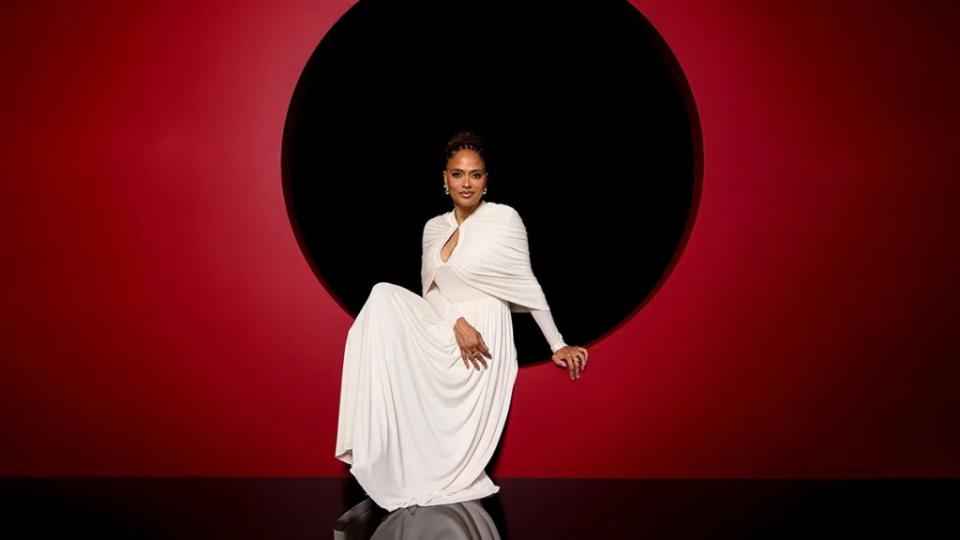
In the space of less than a decade, DuVernay has distinguished herself as a voice of her generation, weighing in on the Black American experience, history and contemporary reality in a series of seminal works. Together, they make up an oeuvre with a clear throughline about Black struggle, injustice, joy and beyond.
It began with her tiny 2012 film, “Middle of Nowhere,” with the then-little-known cast including David Oyelowo and Emayatzy Corinealdi as a young woman concerned for her incarcerated husband. Then in 2014 came “Selma,” an Oscar-winning film starring Oyelowo as the Rev. Martin Luther King. That historical drama set the stage for her television show “Queen Sugar,” a linked series of stories about Black women that was notably directed by a several talented Black women whose voices DuVernay was determined to spotlight. That was followed by the 2016 documentary “13th,” about the epidemic of Black men trapped in the U.S. prison system and its connections to racism and slavery. She then made the big-budget “A Wrinkle in Time” for Disney in 2018, starring Storm Reid.
In 2019, her limited series “When They See Us” brought to vivid life the story of five teenaged Black men falsely accused of the brutal murder of a white jogger in Central Park. (Nash-Betts and Ellis-Taylor both have parts in that series.) The men, now grown, were finally exonerated and released, despite the best efforts of the man who went on to become president, Donald Trump, who took out a full-page ad calling for their execution.
Nothing DuVernay does with her career is accidental. The intention behind “Origin” comes at a moment of exceptional divide in the United States, as antisemitism rises anew, as fear grips many who see the possibility of a new Trump presidency, as racial conflict persists.
“There’s never a point where there’s not something happening in the world that is intense and that is unjust,” DuVernay said. “We are talking a lot about what’s going on in the Middle East. But we also need to look at Sudan, we need to look at the Congo, we need to look at these places where there is real devastation and horror happening that has no attention. And I want to take the opportunity to invite you to dig a little bit and learn a little bit about that. There are so many places around the world where horrific things have been happening for long periods of time and people are being oppressed. And so this film, it’s not even for such a time as this. It is for always, because we are the dreamers. We are the doers. We are the good ones, and we must step up and help the people who need us. There’s always someone in need.”
She took a beat and then added: “People always say, ‘How did they sit around and allow that to happen?’ It’s happening now. It’s happening right now. And it’s easy not to do anything. It’s easier, but it’s better to step up and lean into the moment.”
This story first appeared in the Awards Preview issue of TheWrap’s awards magazine. Read more from the Awards Preview issue here.
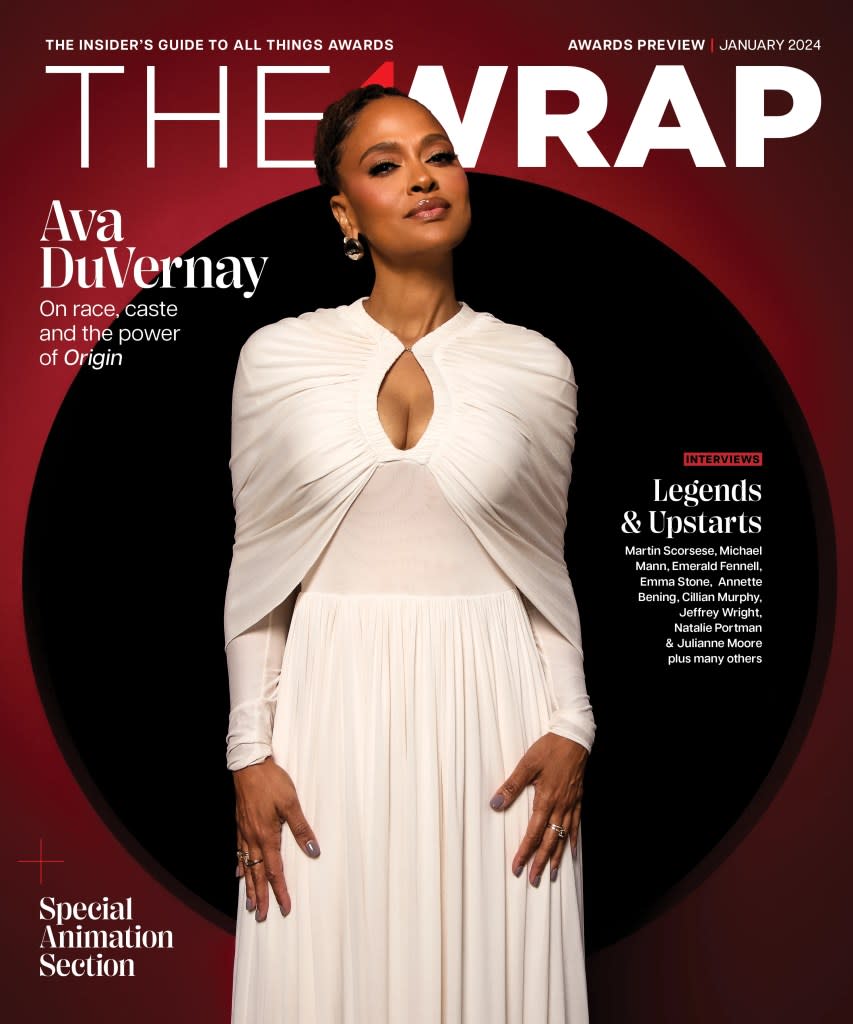
Credits
Creative Director: Jeff Vespa
Photographer: Maya Iman
Photo Editor: Tatiana Leiva
Stylist: Kate Bofshever
Hair & Makeup: India Hammond
The post Ava DuVernay on Her New Movie ‘Origin’ and Why Racism Is Just a ‘Band-Aid on a Wound’ appeared first on TheWrap.

